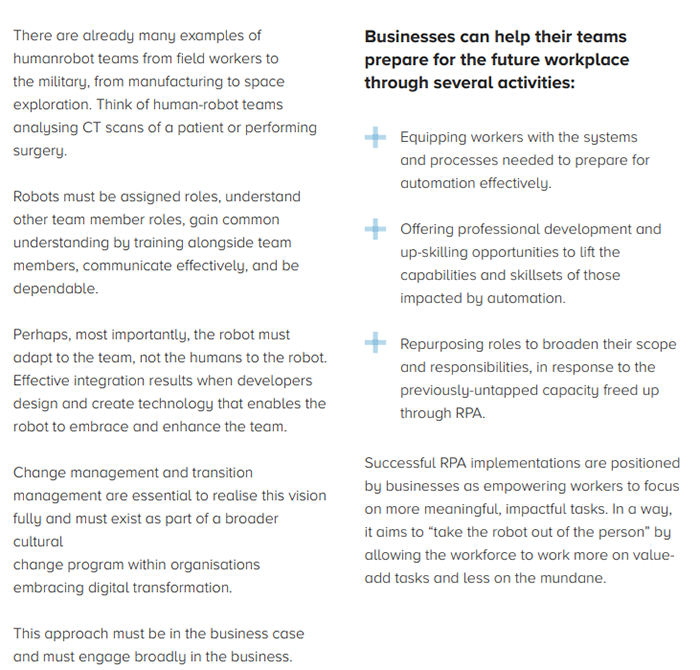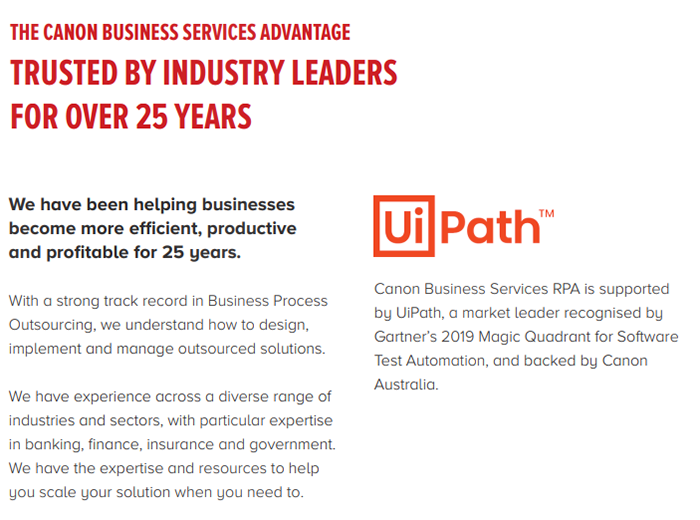
If your answers to the above questions suggest that your organisation is ready to consider an RPA implementation, there are a number of key steps that must be taken to increase the chance of integration success.
Conduct an opportunity assessment based on your current practices and processes to determine whether or not RPA is the most appropriate solution for your needs. The opportunity assessment will identify the scope of processes that could become part of the RPA roadmap. The business case will require a well documented process that shows the impact on staff, customers and on your bottom line. It’s common industry wisdom to “never automate a bad process.” In some situations, it may be more advantageous to optimise existing processes or to consider other service models (such as Managed Services or Offshore Managed Services), rather than proceed with RPA.
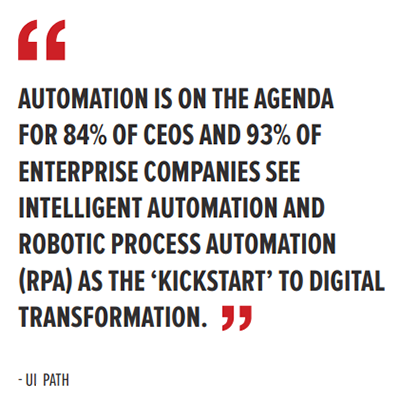
Organisations interested in pursuing RPA have two options: developing their own programs in-house or working with an established RPA partner. Many companies choose a self-hosted approach because they have in-house knowledge of their own processes, control over their team, can see there are several processes that could be in scope, and have internal responsibility and control of delivering the project. However, this requires upfront investment in teams, training, documentation, IT Infrastructure, licensing, and ongoing support and maintenance.
This means an in-house program is slow to get off the ground and has to scale over time to bring about ROI. Choosing a partner for your RPA implementation enables companies to start small with one process, test the waters, and identify there is a ROI before expanding to other processes and departments in the business. This minimises risk to the company and can potentially speed up the implementation’s time-to-market.
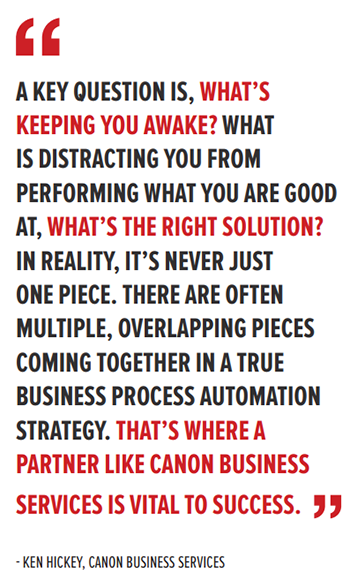
Time to value (TTV) is the time it takes for you to see positive results from using a product to justify your investment. The TTV differs depending upon products and services offered. In some cases, it is immediate; in others, it can be weeks,months, or even years for your organization to realize the full benefit. Businesses must demonstrate to you how their product will solve your needs and establish worth. The longer it takes for you to see the value, the greater the risk you will look elsewhere for a solution.
To deliver within-the-year benefit, vendors must understand what level of return on investment your company requires to deem the product or service successful, having given value. It is critical the business understands your perception of success as it is the foundation for how you select the right process that delivers immediate value. You choose a process to automate so you can provide rapid delivery with in-year payback and real business value requires a thoughtful approach. The process must be simple to effectively reduce risk and appropriately sized to be delivered quickly. They must also understand the level of benefit you require. TTV is the process you select, volume, average handle time, full-time equivalent (FTE), and what can be automated.
To identify suitable RPA automation, consider these factors:
1. Rule-based processes. Is the process composed of clearly defined steps with many exceptions? Are there many steps that require a person to decide what to do next? You may find it’s best to automate less frequent processes in such cases.
2. Time - or resource-consuming. Processes that consume staff or resources are ideal candidates for automation. As a general rule, automating should result in two FTE.
3. Readable inputs. While RPA works on most applications and in most environments, it requires readable inputs. These can be text based data, user interface activities (such as keyboard and mouse input), Optical Character Recognition (OCR), and the like.
4. Structured data. Data with clearly defined types and patterns are best for search functions, such as using a specific term to fire a process action. Unstructured data is not as searchable; this includes audio, video, and free-form writing formats.

A good RPA partner will have several key attributes:
• Sufficient experience in the business to be able to adise organisations on the most appropriate RPA solutions for their needs. For instance, Canon Business Services' 25 years of experience mean we've seen both the development trajectory of RPA and how it can be applied successfully across horizontal and vertical functions.
• An understanding not just of RPA, but of the role it plays in the broader business process outsourcing ecosystem. An RPA implementation can't be considered successful if the processes it automates should have instead been optimised or eliminated.
• A consultative spirit, which ensures that any RPA solution proposed is conceived with the business's specific customers, channels, industries, and offerings in mind.
"We see external partner such as Canon Business Services playing a key role in helping us to consolidate and streamline our entire ICT infrastructure moving forward. We also foresee many more robotic process automation projects once the current one is in full operation, so we can free up more staff to focus on work that directly impacts our customers"
BRENDAN, Executive General Manager of ICT for Endeavour Foundation

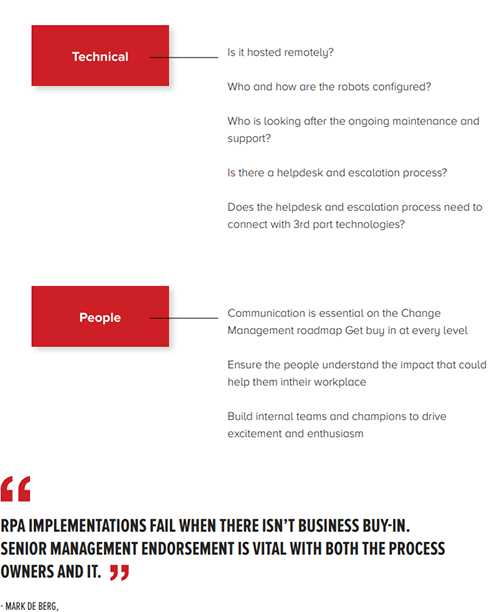
Robots-as-a-Service (RaaS) models — currently offered only by Canon Business Services — can be instrumental in the context of ongoing evaluation and iteration, as they make it possible for organisations to begin with small automation experiments before expanding the scope of their programs. It’s rare for any new program to experience 100% automation from the start. An as-a-Service model puts the provider’s responsibility to manage the RPA implementation to get it as close to 100% as possible, by identifying the exceptions to the mapped process and adding them to the RPA process design. Evaluation and iteration identify and resolve unexpected issues, so they don’t negatively impact long-term results.



